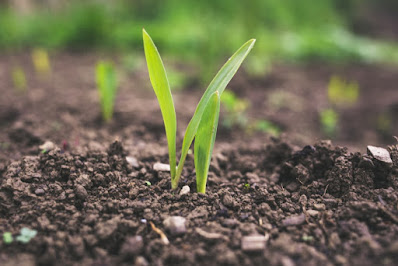Agriculture
Agriculture?Agriculture is the way of growing crops, making soil more fertile and producing more and more food and many more desirable product.Agriculture plays a vital role in our day today life directly or indirectly.The practice of agriculture is known as farming.Agriculture sector gives approx 60% of employment in India.India is the world's largest producer of pulses, rice, wheat, spices and spice products.It is said that agriculture is an art and science.Agriculture is the work of human creativity, imagination and techniques.
Why agriculture is a science?In agriculture we use technologies, scientific principles, crop breeding, using different- different methods for maximum yield.- Father of agriculture Norman Ernest Borlaug.
- Father of Indian Agriculture M.S.Swaminathan.
- First crop cultivated in Agriculture Era was Wheat&Barley.
- 3rd December, celebrated as "Agriculture Education Day".
Agriculture?
Agriculture is the way of growing crops, making soil more fertile and producing more and more food and many more desirable product.- Father of agriculture Norman Ernest Borlaug.
- Father of Indian Agriculture M.S.Swaminathan.
- First crop cultivated in Agriculture Era was Wheat&Barley.
- 3rd December, celebrated as "Agriculture Education Day".
Importance of Agriculture
- As we all know farmer is the back bone of our country because agriculture sector contributes 17% of the total GDP in Indian economy.
- Agriculture gives us food, fodder, clothing, medicines and employment all over the world.
- We use agricultural products in our life directly or indirectly.
Scope of Agriculture- Approx. 58% of the rural people depend on agriculture.
- Agriculture plays a vital role in industrial areas i.e. providing raw materials.
- Allied sectors plays an important role for growing rural areas.
- Allied sectors- Horticulture, silviculture, fisheries, etc.
Agriculture stands for--- A- Activities on the
- G-Ground for
- R-Raising
- I-Intended
- C-Crops for
- U-Uplift
- L-Livelihood
- T-Through the
- U-Use of
- R-Rechargeable
- E-Energies.
How Agriculture Changed Early man's Life?Agriculture played a great role in early man (aadi-maanav) life. Early man migrated from one place to another just in search of food.Early man chopped (cut) trees and start adopting the wild plants and domesticating of wild animals.When early man get enough food by their wild cultivated plants they need not to migrate and start making their colonies at a particular place.
- As we all know farmer is the back bone of our country because agriculture sector contributes 17% of the total GDP in Indian economy.
- Agriculture gives us food, fodder, clothing, medicines and employment all over the world.
- We use agricultural products in our life directly or indirectly.
Scope of Agriculture
- Approx. 58% of the rural people depend on agriculture.
- Agriculture plays a vital role in industrial areas i.e. providing raw materials.
- Allied sectors plays an important role for growing rural areas.
- Allied sectors- Horticulture, silviculture, fisheries, etc.
Agriculture stands for--
- A- Activities on the
- G-Ground for
- R-Raising
- I-Intended
- C-Crops for
- U-Uplift
- L-Livelihood
- T-Through the
- U-Use of
- R-Rechargeable
- E-Energies.
How Agriculture Changed Early man's Life?
Agriculture played a great role in early man (aadi-maanav) life.
Early man migrated from one place to another just in search of food.
Early man chopped (cut) trees and start adopting the wild plants and domesticating of wild animals.
When early man get enough food by their wild cultivated plants they need not to migrate and start making their colonies at a particular place.


Comments